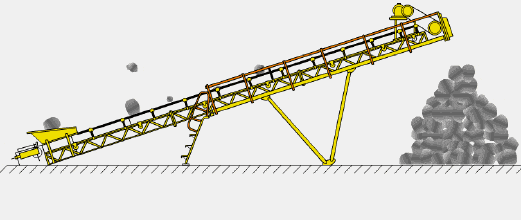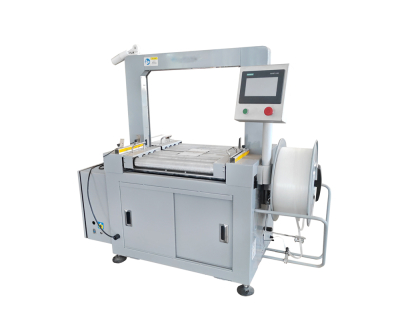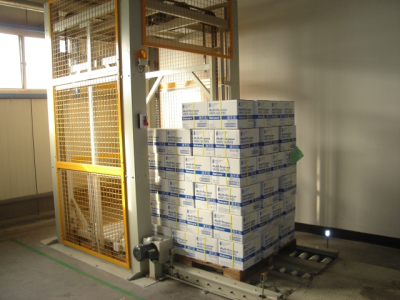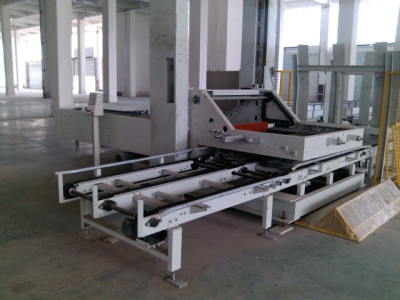Belt conveyor deflection, detailed explanation of the causes of failure and response program
Belt conveyor has a wide range of applications, and the working environment is generally more severe, to maintain the good working condition of the conveyor operation, to extend the service life of the conveyor equipment, improve the quality of operation, reduce operating costs has been one of the goals pursued by engineers and technicians.
In this paper, for the belt conveyor belt deflection, rollers running inflexible two typical faults, detailed analysis of the causes of failure, and put forward to solve the problem of some effective methods.
Belt deflection phenomenon and solutions
In the belt conveyor, the conveyor belt is an important, but also one of the expensive components, its price accounts for about 25% to 50% of the total price of the conveyor. Conveyor belt is both traction components, transfer of power and movement, but also bearing components, supporting the material load, the work situation is more complex, often encountered conveyor belt deflection occurs.
Due to the conveyor belt deflection may cause the edge of the conveyor belt and frame friction, resulting in premature damage to the edge of the conveyor belt, lightly affecting the service life of the conveyor, affecting the amount of material conveyed; heavy material, or even the occurrence of accidents, directly affecting production.
1 Reasons for deflection
The causes of conveyor belt deflection are mainly due to the following factors.
(1) The equipment itself:
① poor rigidity of the frame, the deformation is large under the action of the load;
② The cylindrical error of the outer circle of the roller is large;
③ Roller rotation is not flexible, so that the conveyor belt uneven force on both sides;
The parallelism error of cylindrical axis between rollers is large;
⑤ The quality of the conveyor belt itself is defective, the thickness is uneven, causing vibration during operation or the length of the two edges of the belt is not consistent, resulting in conveyor belt deflection;
(6) The joints of the conveyor belt are not parallel and the coupling error is large.
(2) Installation and adjustment:
① transmission, redirection roller axis and the center line of the conveyor perpendicularity error is large, when running so that the conveyor belt and the horizontal line between the larger angle of inclination;
② roller axis and conveyor center line verticality error;
③ frame and ground connection strength is not enough, the frame is not stable;
④ guide trough, discharge chute guide baffle installation position is not appropriate, the operation of the conveyor belt on both sides of the uneven force caused by the run-off.
(3) Use and maintenance:
① poor cleaning performance of the cleaner, the use of the roller or roller outer diameter of the local increase; ② improper location of the feed port, so that the material on the conveyor belt bias load;
③ Improper maintenance and adjustment;
④ For the steel cord core conveyor belt, due to the uneven force of each steel wire core in the manufacture, the conveyor belt runs off in the operation, or the conveyor belt is strong and poor, and the elongation is large after being loaded, which causes vibration and runs off;
⑤ The vibration of the conveyor system during operation will also cause the deflection of the conveyor belt.

2 Measures to prevent and eliminate the deflection of the conveyor belt
For the deviation of the conveyor belt caused by the reasons of equipment manufacturing, it is mainly through improving the precision of design and manufacturing to prevent and reduce the occurrence of the phenomenon of conveyor belt deviation.
For the deflection caused by improper installation and adjustment and daily use, it should be considered from the following aspects.
1) The deflection of the conveyor belt on the driving roller or tail roller is usually eliminated by adjusting the position of the bearing seat of the roller. Analyze the specific situation and adopt the following methods to solve the problem in a targeted manner.
a. The axis of rotation of the roller itself is not perpendicular to the longitudinal centerline of the conveyor, resulting in the conveyor belt being loose on one side and tight on the other, and the belt moves from the tight side to the loose side, resulting in the phenomenon of runout. The bearing seat position of the tight side should be adjusted to equalize the transverse tension of the belt and eliminate runout. If the tail drum is spiral tensioning drum, the cause of the tail run-off may also be due to the tensioning device of the two sides of the spiral rod tightening force is not equal, resulting in an imbalance caused by.
b. The axis of the drum is not horizontal, and the difference in height of the bearings at both ends is another reason for the head or tail run-off. At this time, the roller axis can be leveled by adding or subtracting shims at both ends of the roller bearing seat, which can eliminate the deviation of the conveyor belt.
c. The adhering material on the surface of the roller is equivalent to increasing the local diameter of the roller, and the empty section of the conveyor belt should be strengthened in order to reduce the adhering material or dust accumulation on the conveyor belt.
2) In addition, the deviation of the conveyor belt between the head and tail is called central or local deviation. The reason for this kind of deflection is more complex, it is related to the contact with the conveyor belt along the course of the device, need to analyze the specific problems, using the following methods targeted to solve.
a. The axes of loaded or unloaded branch rollers are not perpendicular to the running centerline of the conveyor belt, causing the conveyor belt to run off at the rollers. The deflection side of the rollers should be adjusted to the direction of the conveyor belt. At this time, it is often necessary to adjust the adjacent groups of rollers to achieve the purpose of eliminating deflection, and the deflection angle of each group should not be too large.
b. The deflection caused by the joint interface of the conveyor belt is not perpendicular to the centerline of the belt (flare), which should be eliminated by improving the joint precision of the belt during installation.
c. The direction of loading materials onto the conveyor belt is not correct, so that the lumpiness and weight of materials are seriously unevenly distributed along the direction of bandwidth, causing deflection, which should be eliminated by properly adjusting the position of the drop tube and guide trough.
d. In recent years, some people also propose to apply the method of air film to adjust the deflection of conveyor belt. However, due to the high manufacturing cost and the fact that there are still some technical problems that can not be solved well, it is difficult to popularize this method for a while.




